I want to post a few additional photos from our road trip in the southeastern states.

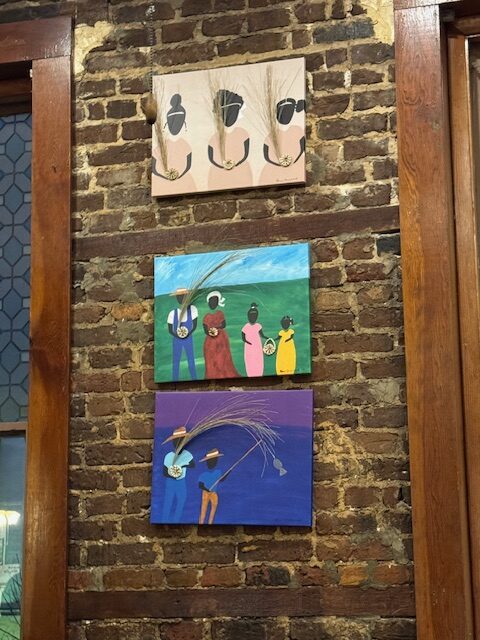
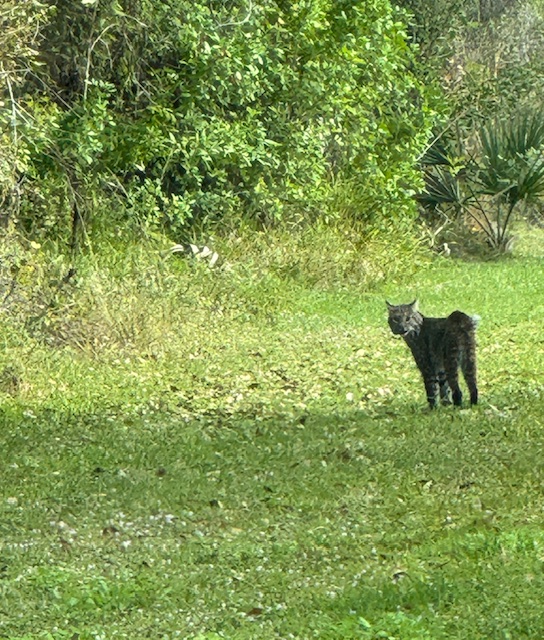

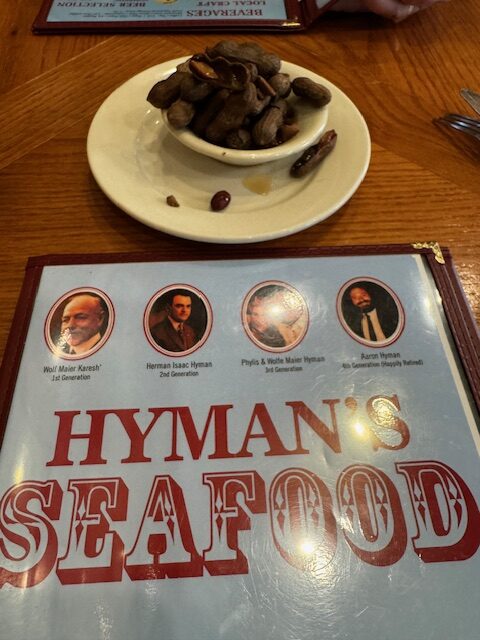
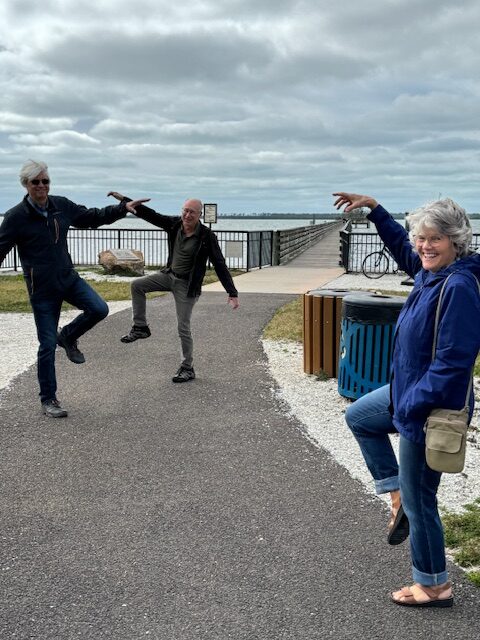


I want to post a few additional photos from our road trip in the southeastern states.








On our February road trip through the southeastern states, we met up with a lot of friends and family. We pre-planned, or made last minute plans, to connect with folks that either lived in the areas we visited, or they were visiting the same areas in the south where we were. Our two intended sightseeing destinations were Charleston, South Carolina and St. Augustine, Florida.

We stayed in a beautiful carriage house in the historic district of Charleston, South Carolina. It rained the first day we were there, but the inn provided umbrellas so we went on our merry way, walking around the city, and to the Charleston Museum which was very interesting.
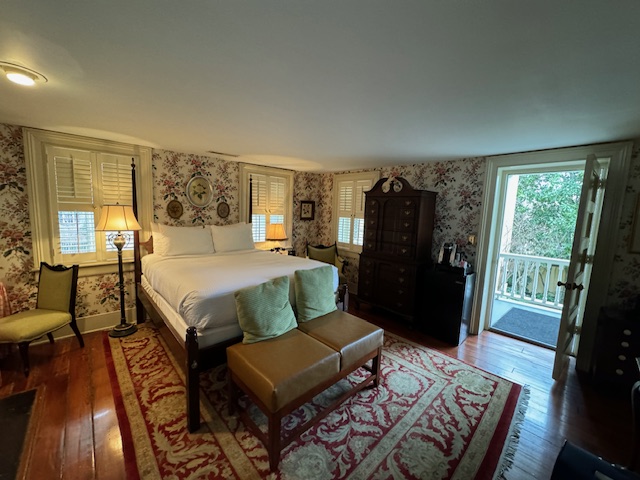
We toured a WWII aircraft carrier (the Yorktown) in Charleston which we found intriguing and worthwhile.

We went on a horse-drawn carriage ride (on a nice, sunny day).

We walked along Rainbow Row (named for a series of thirteen colorful historic row houses in Charleston), and ate some great seafood.
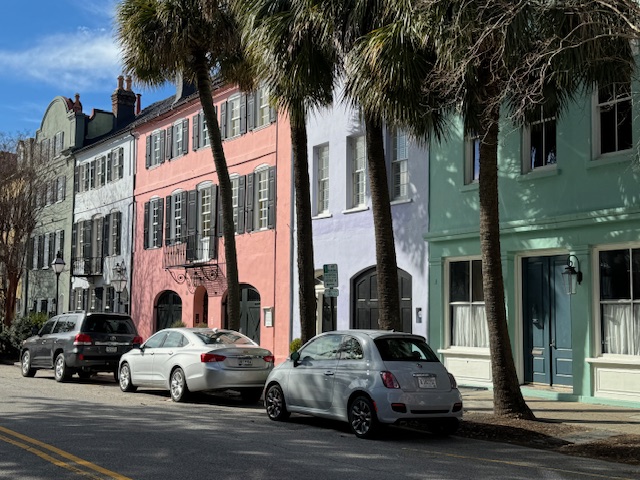
Charleston is nicknamed the holy city because of its number of church spires that dot its skyline.
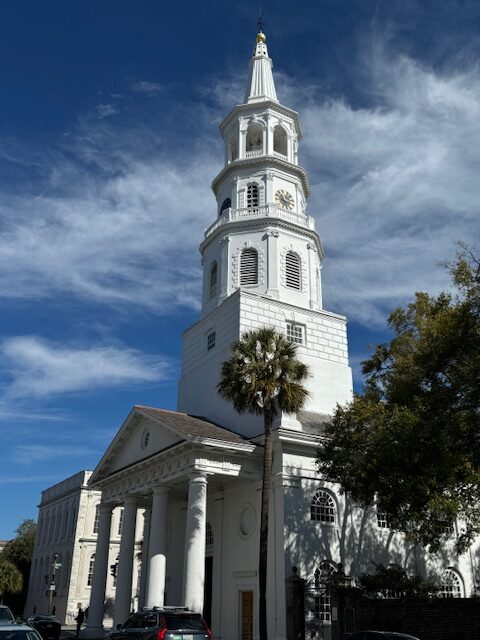
St. Michael’s is one of the churches with a steeple, built in the 1750’s. It is listed on the National Register of Historic Places. George Washington worshipped there one time, as did Robert E. Lee. It continues to have an active congregation today.

It’s a stunning white church that stands out. It is gorgeous! During the revolutionary war, the steeple was painted black for disguise. For more of its colorful history click here: St. Michael’s Church.
A friend recommended I read the book Celia Garth prior to our visit to Charleston. It is a historical fiction novel by Gwen Bristow written in 1959. The narrative takes place in Charleston during the revolutionary war. The author provided me some orientation to the town, and a lot of its history. The story was fun to envision as we walked along the cobblestone streets.

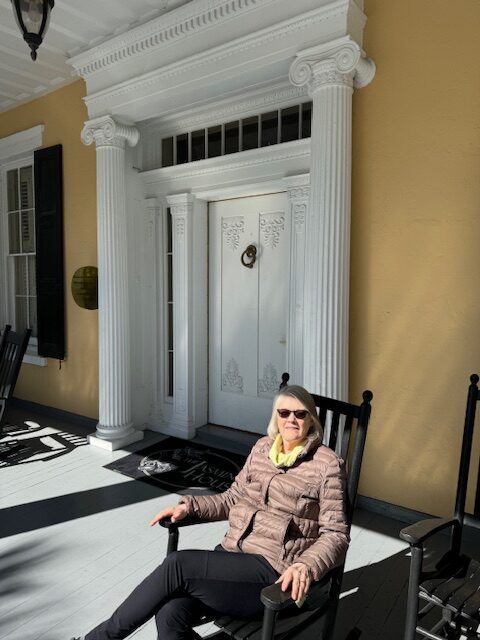
Charleston is s charming city.
St. Augustine, on the northeast coast of Florida, was an exciting place to visit too. It is the oldest city in the U.S., and is known for its Spanish colonial architecture. We enjoyed walking around this city, which is our preferred mode of transportation. The beautiful buildings and quaint shops and old city gate were all fun to see.
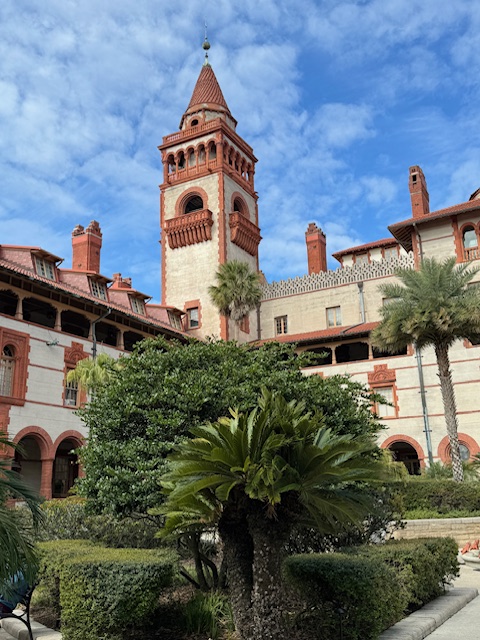

We toured the Castillo de San Marcos fort, a 17th-century Spanish stone fortress.
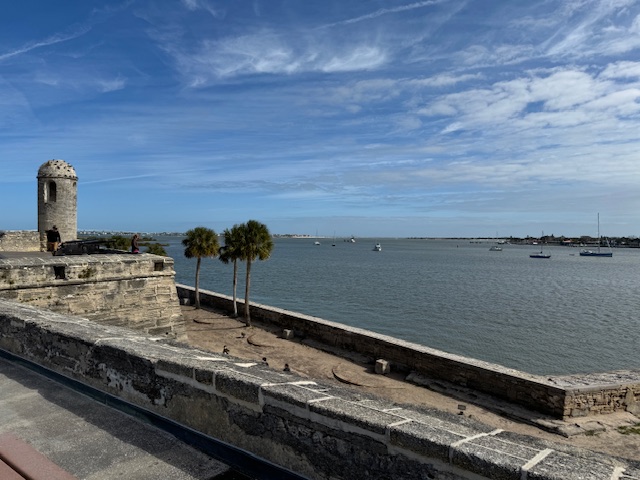
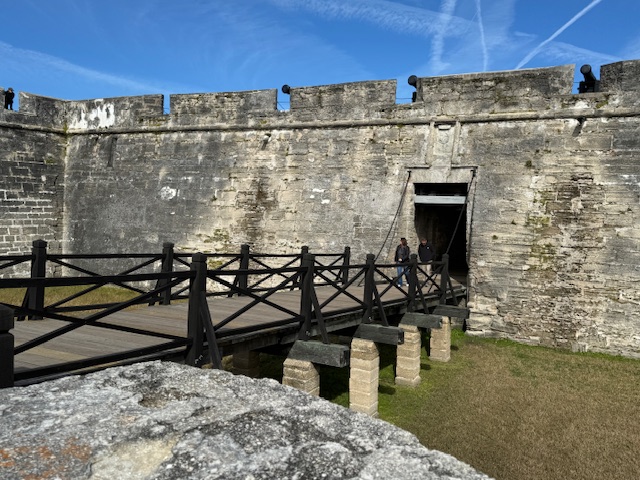
We climbed up 219 steps of the historic 1874 St. Augustine Lighthouse.
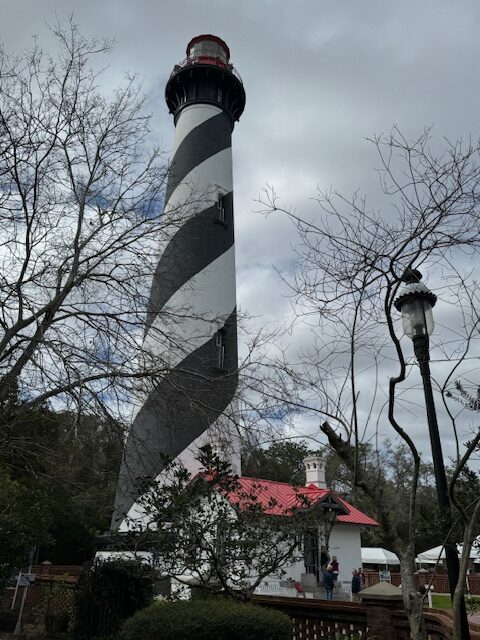
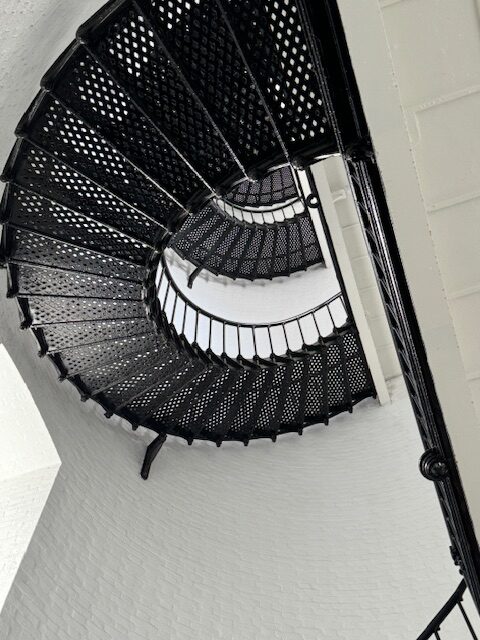
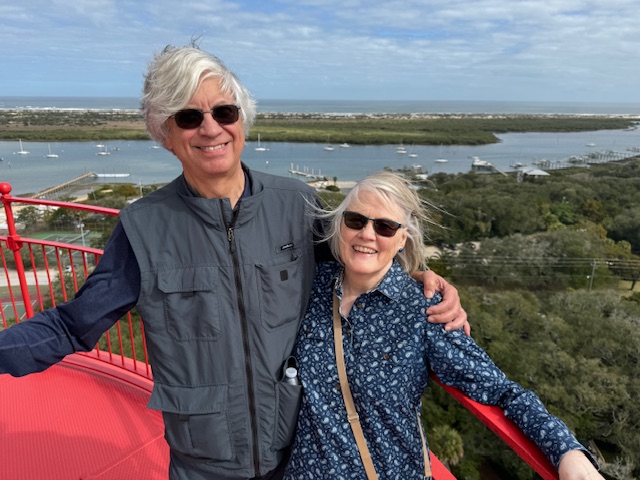
And we ate more great seafood.

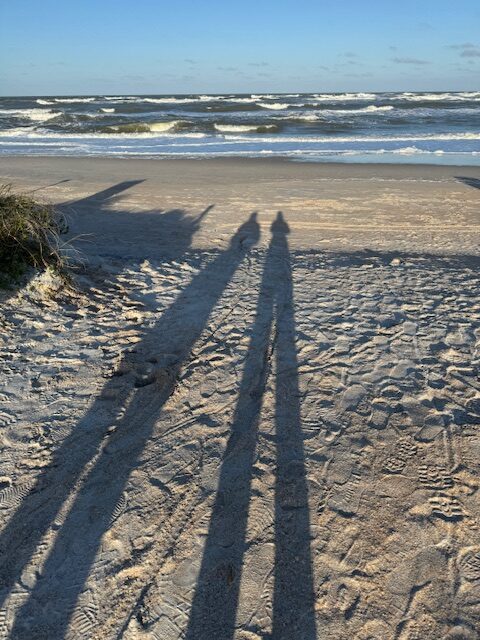
Although I had not read a book about St. Augustine before our trip (it was referred to several times in Celia Garth), we throughly enjoyed our visit to the oldest city in the United States.

One of the attractions in Charleston, South Carolina is an old, oak tree named the Angel Oak Tree. I’m not sure how it got its name…maybe because of its huge canopy of overarching branches offering protection. It is a Southern live oak, which is different than your “ordinary oak” tree.
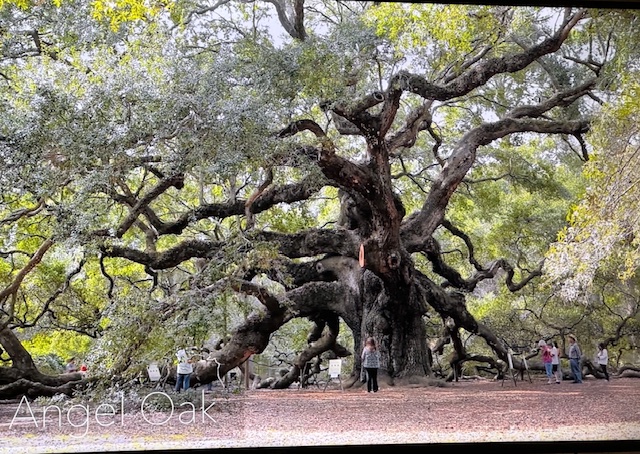
“The Southern live oak (Quercus virginiana), also known simply as the live oak, gets its name from the fact that, unlike other oaks, it doesn’t lose its leaves in the autumn. Live oaks are native to the Southeastern coast of the United States.”*

We like trees and decided to drive the extra miles out of town, to visit this majestic tree. It did not disappoint. Surprisingly, it is down a rutty, dirt road.

We knew we had arrived when we saw a high, chainlink fence outlining the circumference of the tree, with signs saying this property is protected and patrolled. We noticed the surveillance cameras too. The area is free and open to the public during the day, but closed and gated at night.
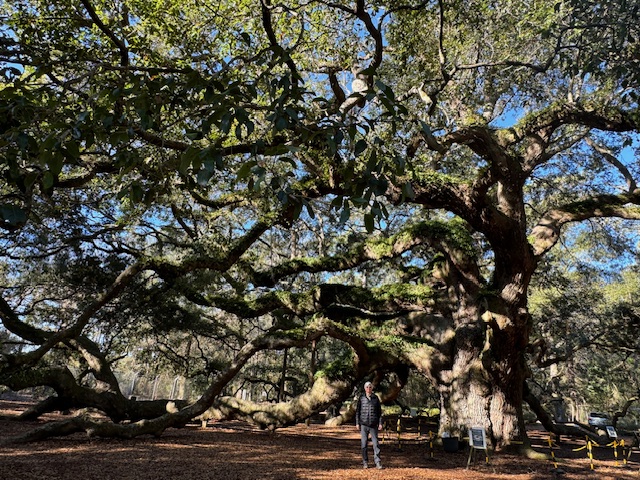
This is all good. We contrasted this to the Sycamore Gap tree next to Hadrian’s Wall where we hiked last fall, in England. That sycamore tree stood tall and majestic also, and was 200-300 years old, standing alone in the gap, for anyone to enjoy. A national treasure, for Great Britian. Unfortunately, two weeks after we sat under that beautiful Sycamore tree, vandals came and cut it down! Hopefully that will not happen to the Angel Oak Tree in South Carolina.

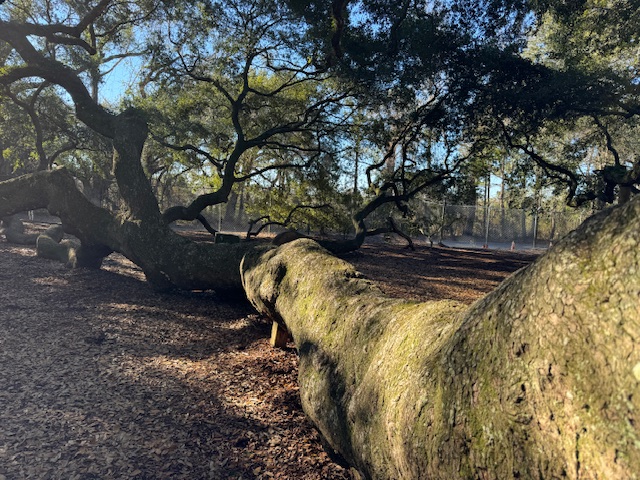
The Angel Oak tree is a national treasure. It is 300-400 years old…some estimate even older. They say the tree is 65 feet high with a trunk circumference of 25.5 feet, shading an area of 17,000 square feet. Of course, I couldn’t capture the whole tree in one photo…but I did take several photos.
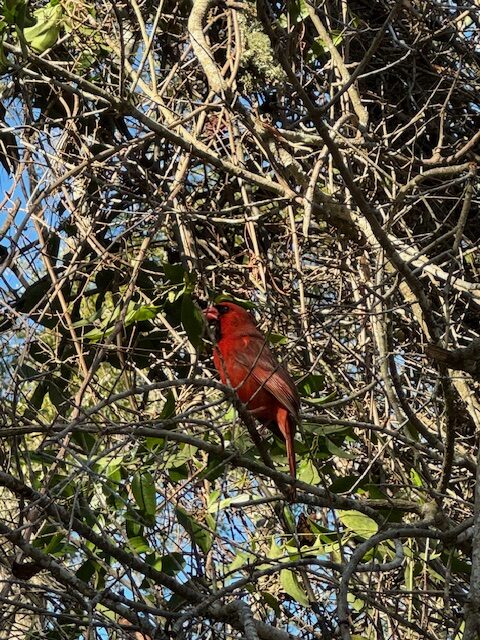
The Angel Oak tree was worth the extra effort to find. A cardinal serenaded us from a different tree, but he added extra joy to our experience. A new baby tree has been sprouted from an acorn from the Angel Oak tree. It is three years old and grows in a pot next to the trunk, under the protecting branches of its mama.
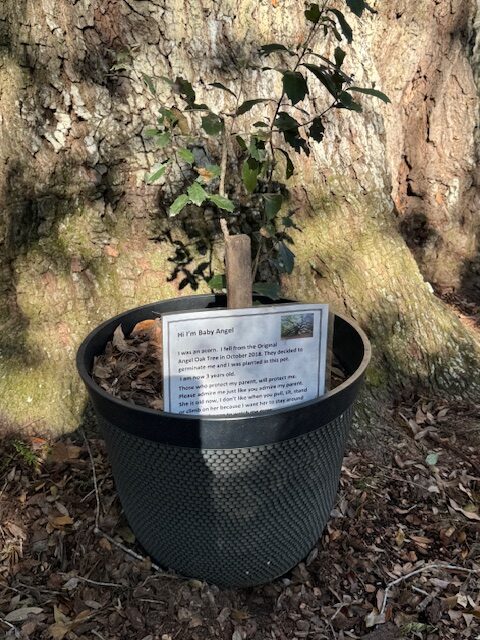
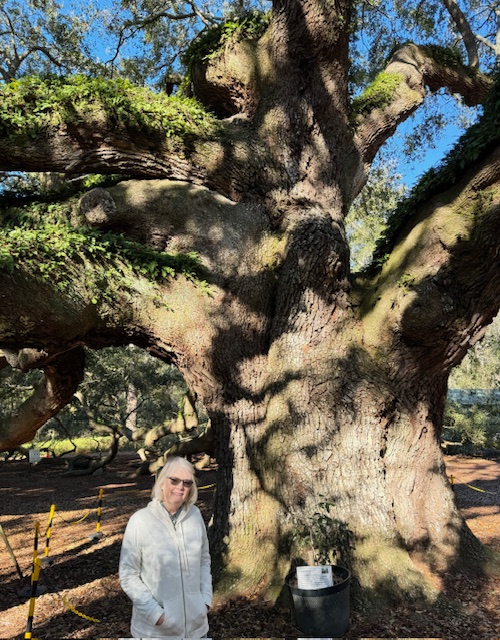
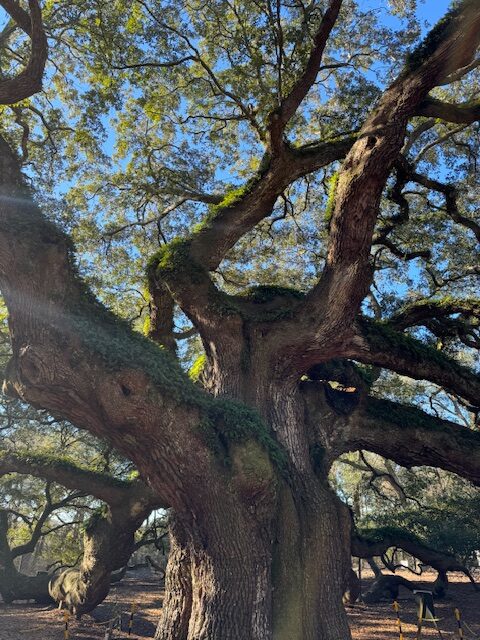
Think of all this tree has lived through. Ah, the stories it could tell.
*Wikipedia
We decided to take a road trip from Charlotte to the Atlantic coast over the weekend, just to see the ocean. (I’m always drawn to water!) We left Saturday morning and drove four hours to Myrtle Beach State Park in South Carolina. The state park offered a nice sandy beach on the Atlantic Ocean, with a wooden pier, hiking trails, an activity center and more.
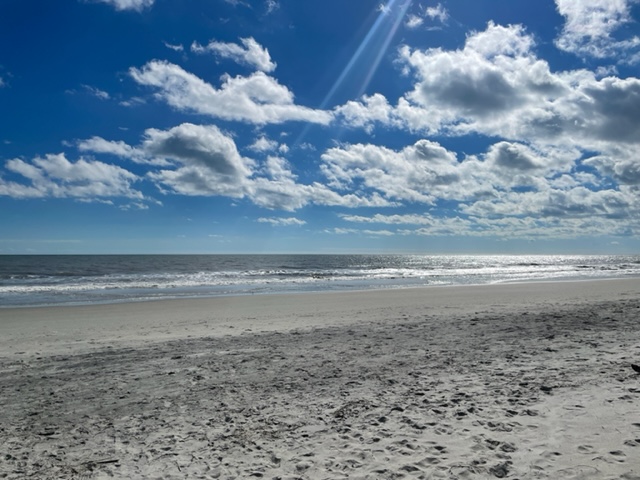
We arrived in time to eat our picnic lunch on the sandy beach. The weather was great…77* and sunny. The grandkids enjoyed playing in the water and the sand. Gary and I enjoyed the sunshine, and watching the grandkids have fun.
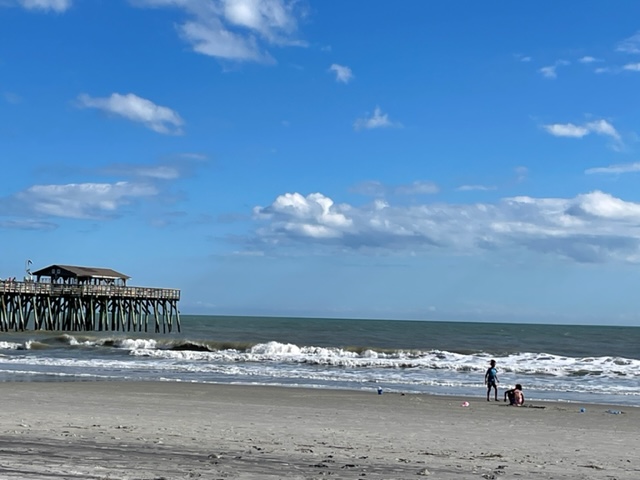
We walked out on the pier, and later in the afternoon we planned a hike.
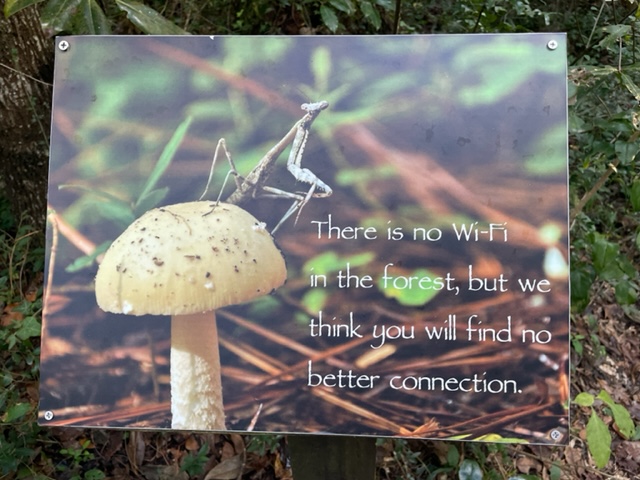
As we started our hike, I was excited to read a nature quote on a sign at the beginning of the trail, and I thought to myself…this will be a fun hike. As we walked a little further, I started slapping mosquitoes, as did everyone else. As we continued on, we were attacked by mosquitos…so we turned around and walked back out of the woods. So much for a hike in this state park.

On our drive east to Myrtle Beach on Saturday morning, we noticed fields that looked full of snow clumps…and discovered it was cotton. On our way home the next day, we stopped at one of several cotton fields we passed.
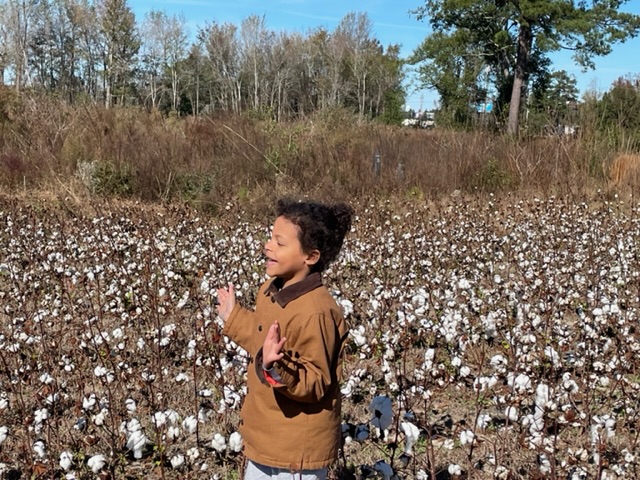
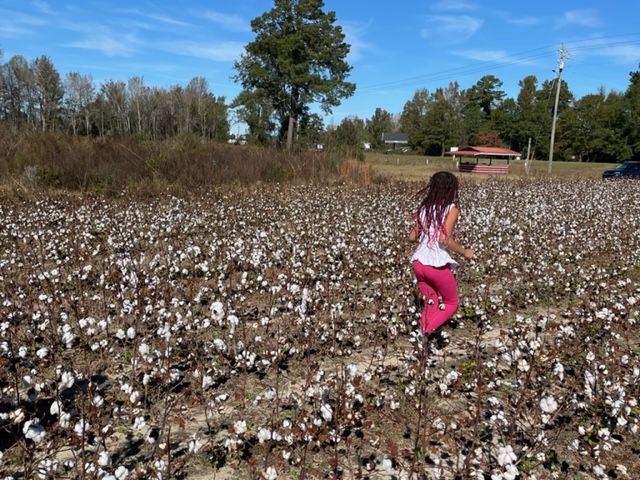
We got out of the car and walked through the rows of cotton and got a good look at this interesting crop!
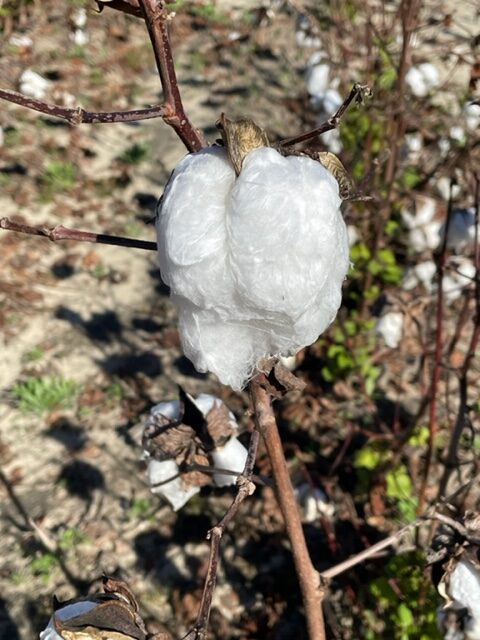
It was a quick trip, but a memorable one.
*Wikipedia
We left North Carolina early Thursday morning to start our journey back to Minnesota. We planned a new route home, because we wanted to see a part of Mississippi.

We wanted to stop there because there are only two states I do not recall having been in…Idaho and Mississippi. Since Mississippi seemed a reasonable distance to include on our trip home (Idaho, of course, was not!) we decided it would be fun to stay overnight in Tupelo, Mississippi.
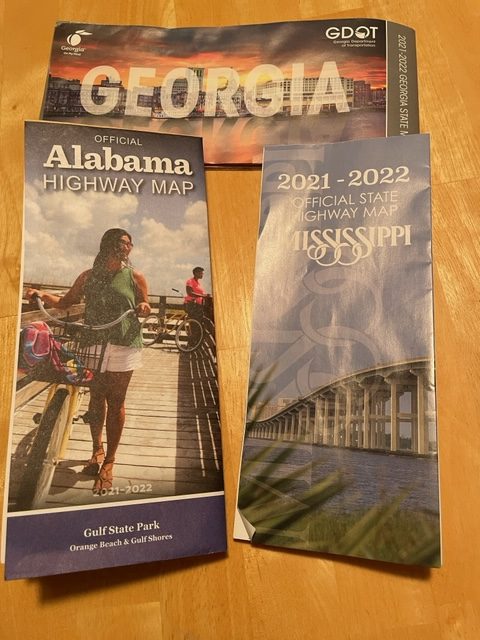
Therefore, on Thursday we drove from North Carolina, through South Carolina, through Georgia and through Alabama to Mississippi. We stopped at the birthplace of Elvis, a must-see attraction in Tupelo, before checking into our hotel…then we went out for dinner. It was a pleasant day.


The next morning we drove on the Natchez Trace Parkway, a 444 mile national scenic byway, that goes through three states.
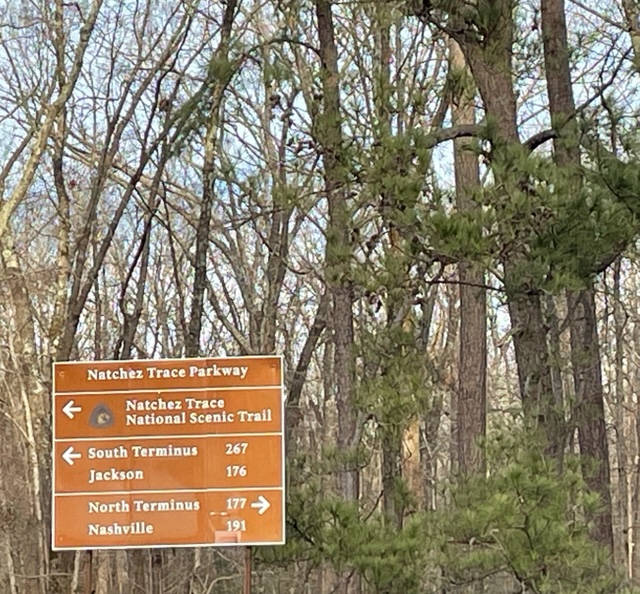
The road roughly follows the “Old Natchez Trace” a historic travel corridor used by American Indians, European settlers, slave traders, soldiers and a few presidents. It has a lot of history to tell, dating back to the late 1700’s.
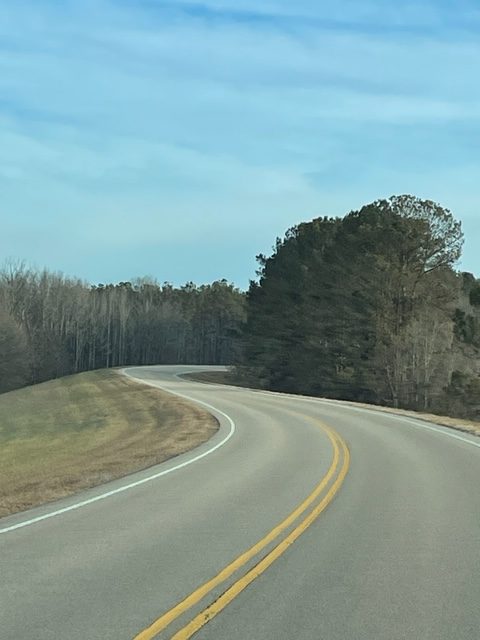

We drove on the parkway for thirty miles before getting off to head towards Kentucky. There was another attraction we wanted to see on our way back to Minnesota…the National Quilt Museum in Paducah, Kentucky.


The quilt museum was interesting. I have more thoughts and photos to share in an upcoming post.
Our third morning was a bit different than the others. We spent the night near St. Louis, Missouri, and woke up to a snowstorm (unusual amounts expected for this part of the country). We got an early start, but it was slow going the first few hours, until we drove out of the storm and the roads cleared up.
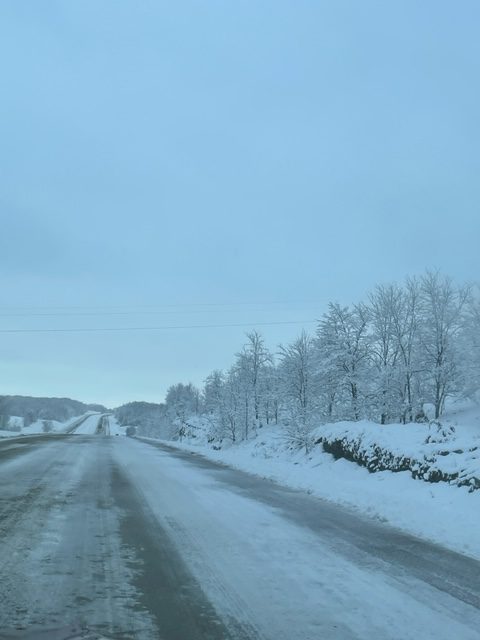
As we checked out that morning in St. Louis, the clerk at our hotel gave us a blessing for our safety while traveling through the snow…she was a kind-hearted woman and a delight. It felt right, and special, to start our journey that day with her blessing.


We were thankful we made it back to Minnesota safely.